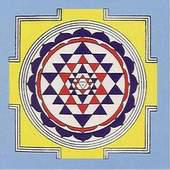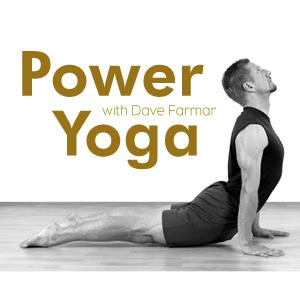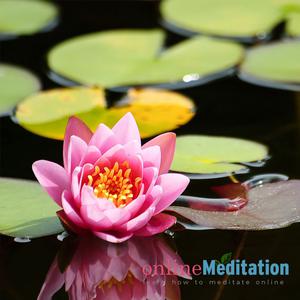
Yoga Meditation and Contemplation from SwamiJ.com
Swami Jnaneshvara Bharati
Self-Realization in the Tradition of the Himalayan masters as on www.SwamiJ.com. The goal of sadhana or practices is the highest Joy that comes from the Realization in direct experience of the center of consciousness, the Self, the Atman or Purusha, which is one and the same with the Absolute Reality. This Self-Realization comes through Yoga Meditation of the Yoga Sutras, the contemplative insight of Advaita Vedanta, and the intense devotion of Samaya Sri Vidya Tantra. The methods are thorough, yet practical and applicable to all sincere seekers.
- 34 minutes 20 secondsDeveloping Determination for EnlightenmentFrom a presentation by Swami Jnaneshvara at the Center for Nondualism on February 1, 2009.1 February 2009, 5:00 pm
- 32 minutes 12 secondsThe Million Dollar Question in Nondual Yoga Meditation, and ContemplationJust like the game show, this million dollar question is the last of all the questions of nondual Yoga meditation and contemplation. It is also the hardest question, and the most important question. It is the question that supersedes all other questions. It is the question that is neither in the past, nor in the future. It is the question by which all other questions pale by comparison.25 May 2008, 5:00 pm
- 32 minutes 12 secondsSermon on the Mount, Nondualism, and Yoga VedantaThis presentation is on the Sermon on the Mount (Matthew 5-7 of the Christian bible), Nondualism, and Yoga Vedanta Meditation and Contemplation. It is from a presentation at the Center for Nondualism on May 11, 2008.11 May 2008, 5:00 pm
- 41 minutes 33 secondsTheism, Atheism, Nondualism, Contemplation, and ShaktipatPresentation by Swami Jnaneshvara Bharati at the annual conference of the Center for Non-Dualism in Fort Walton Beach, Florida on February 23, 2008. The talk blends three topics: 1) Theism, Atheism, and Non-Dualism; 2) How do I contemplate? What are “great” contemplations? 3) What is shaktipat? How does it work?28 February 2008, 2:00 am
- 33 minutes 39 secondsFirst Cause No Harm (Ahimsa of Yoga Vedanta Meditation)This recording is from a talk entitled First Cause No Harm at the Center for Non-Dualism at the time of the transition to a new year. It goes into the subtler meanings of the process and practice of Ahimsa or Non-Harming. Please see the website at CenterForNonDualism.org as well as the site SwamiJ.com.31 December 2007, 5:00 pm
- 6 minutes 45 secondsShakti, Kundalini, and the River of Tantra Yoga MeditationFrom www.SwamiJ.com: There is one energy flowing in a river, a hydroelectric power plant, electricity, and the many forms of energy such as recorded music, television, and microwaves. Similarly, there is one energy in the universe, Shakti, that manifests as many forms, which have many names, such as kundalini, prana, chakras, and the physical body.15 May 2007, 3:00 pm
- 9 minutes 39 secondsTwo Kinds of PrayerThere are two kinds of prayer: ego-centered prayer and God-centered prayer. These comments by Swami Rama are excerpted with permission from Volume 1 of the 5 CD audio series Conscious Living: An Audiobook for Spiritual Transformation, ISBN 818815718x by Swami Rama. See also SwamiRamaFoundation.us and HIHTIndia.com.27 January 2007, 10:00 pm
- 7 minutes 53 secondsHow to Use the SwamiJ.com WebsiteThis podcast is from the article at: www.SwamiJ.com/how-to-use-swamij-com.htm. It may seem odd to have instructions on how to use a website, but the need comes from the common statement of people that while they love the articles on the SwamiJ.com website, they don't know where to get started. By understanding the way the site is intentionally designed, it might be easier to use. The SwamiJ.com website is on Self-Realization through traditional Yoga meditation of the Yoga Sutras, Yoga Vedanta, Sri Vidya Tantra Yoga meditation, Jnana Yoga meditation, Karma Yoga, Bhakti Yoga. Emphasizes Yoga as meditation, since Yoga truly is meditation.25 January 2007, 7:00 pm
- 3 minutes 26 secondsYoga and Institutional ReligionYoga is in religion, but religion is not in Yoga. The principles of Yoga are (in alphabetical order) in Buddhism, Christianity, Hinduism, Islam, Jainism, Judaism, Sikhism, and most of the other religions. However, unlike religions, Yoga itself has no deity, worship services, rituals, sacred icons, creed, confession, clergy, institutions, congregation, membership procedure, or system of temples or churches. The word “Yoga” means “union” referring to the direct experience of the wholeness of ourselves at all levels.5 January 2007, 4:00 am
- 1 hour 9 minutesTransitions: New Years and New Moments in Life and MeditationThe transition from one year to the next year happens in an infinitely short moment that is actually non-existent in time. So too, there are transitions in the moments of life and the moments of meditation. Mindfulness of transitions in daily life and during meditation time is extremely useful on the spiritual journey to enlightenment. I hope that you enjoy the discussion. The recording ends with a 15-minute guided contemplative meditation on Transitions, which begins at 54:42.31 December 2006, 3:00 am
- 1 hour 13 minutesMeditation on Form and Formless, Knowledge and DevotionThis conversation is about Saguna and Nirguna, and the paths of meditation and contemplation with form or without form, which is related to the paths of Knowing (Jnana Yoga) and Devotion (Bhakti Yoga). The discussion involves the approaches individually, and how the work together. The recording ends with a 17-minute guided contemplative meditation on either Form or the Formless, which begins at 55:47.25 December 2006, 4:00 am
- More Episodes? Get the App
- http://www.swamij.com
- en-us
Your feedback is valuable to us. Should you encounter any bugs, glitches, lack of functionality or other problems, please email us on [email protected] or join Moon.FM Telegram Group where you can talk directly to the dev team who are happy to answer any queries.
 Yoga Revealed Podcast
Yoga Revealed Podcast
 The Uplifted Yoga Podcast
The Uplifted Yoga Podcast
 Yoga classes - Live Love Teach - Yoga Teacher Training School
Yoga classes - Live Love Teach - Yoga Teacher Training School
 Power Yoga with Dave Farmar
Power Yoga with Dave Farmar
 Online Meditation Course
Online Meditation Course
 The Yoga Hour
The Yoga Hour